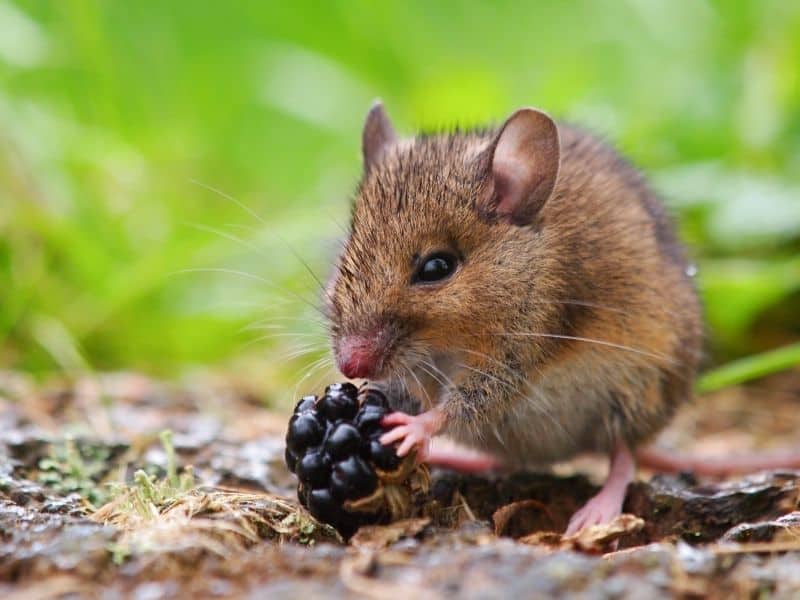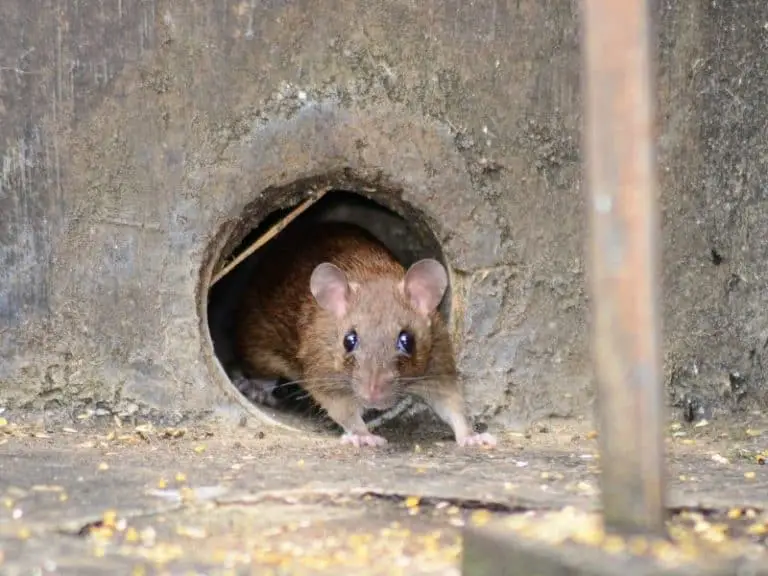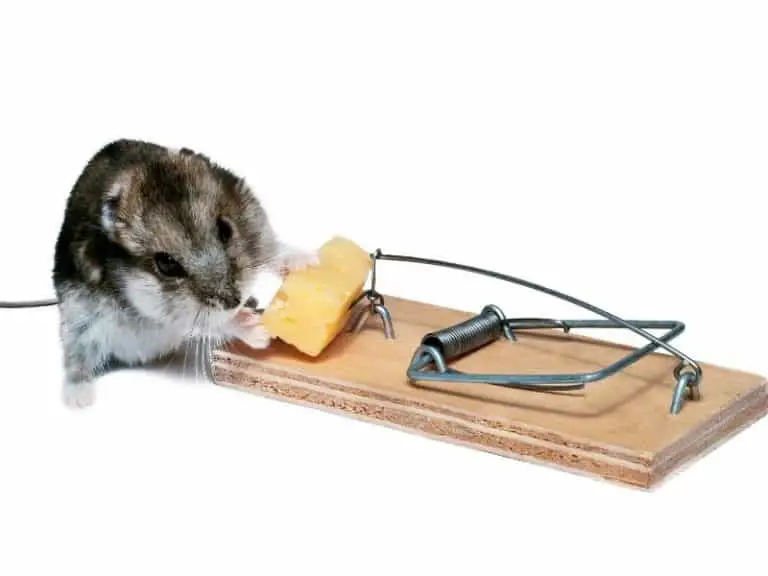Do Mice Turn Into Rats And Vice Versa
One day my wife shocked me when she claimed that she’s afraid of mice because they turn into rats when they grow up.
Rats and mice share many physical qualities. They both have hairy bodies, beady eyes, large ears, and long tails. They also make squeaky noises.
However, mice and rats have some differences, too, when it comes to their movement, behaviors, habitats, and sizes — rats are larger than mice.
Mice do not turn into rats. While both rats and mice fall into the rodent category, they are two different species. It is possible for large mice to be mistaken for small rats. Mice can eat a lot and grow big, but mice are not rats in waiting.
There is no denying that rats and mice are some of the most terrifying and dangerous common household pests on the face of the planet.

It is important to be aware of the key differences between these critters not only to avoid mistaking one species for the other but also to know the enemy, which is essential for living in a rodent-free home.
If you are one of those who believe that mice grow up to be rats, keep on reading. Below you will come across some of the most essential matters that you need to know about these furry critters.
The Differences Between Rats and Mice
Not everyone is blessed with the gift of telling apart rats from mice (and vice versa) with just one look.
Some people may have difficulty figuring out which is which, especially if it is not all the time that these beady-eyed rodents dart before them.
To an untrained eye, rats and mice look pretty much the same.
A quick way to tell if it’s a rat or a mouse you are looking at is by considering its size. Generally, rats are larger than mice. Some people even find mice cute and think about turning them into their pets.
However, there are many other things that set these species of rodents apart, and they include…
Mice are more curious than rats
It’s rare for you to come across rats.
That’s because aside from the fact that they are nocturnal creatures, rats do not really like exploring as they are afraid of humans and large animals, such as cats and dogs.
Yes, despite causing many people to get scared of them, rats themselves live in fear.
Mice, on the other hand, are fearless. It’s due to this why they tend to explore a lot.
So, if there is a furry critter with a long tail carelessly surveying the area, there is a huge possibility that it is a mouse and not a rat.
They have different physical features
Besides the size difference, there are other things that make it easy to tell rats from mice and the other way around.
You will need to be very observant if you want to be able to tell these two rodent species apart easily.
For instance, the tails of rats are massive and scaly.
They are also completely free of hair.
On the other hand, the tails of mice are long and thin. They are covered with hair, too. The ears of rats are short and usually hair-free.

The ears of mice, in contrast, are large and floppy. They are also usually hairy.
It’s also easy to tell whether it is a rat or a mouse in front of you just by looking at the snout. The snout of a rat is shorter and blunt. Needless to say, the snout of a mouse is longer and pointed.
Rats are very smelly creatures
While both rats and mice do not smell nice, one of these rodents can offend your nose more than the other.
Rats smell like ammonia, which is why the presence of this odor in your home can reveal the fact that there may be a rat infestation that you are not aware of.
Mice smell like pee, but you will have to put your nose very close to them to detect it.
It’s not just the smell of rats that can reveal their presence in your home. Having weird greasy smears on surfaces may also be a telltale sign of a rat infestation — those stains are due to the grimy hair of rats.
The takeaway: Rats and mice are totally different species, which is why they have different behaviors and characteristics. There is no way that mice will turn into rats when they grow up.
Can Rats and Mice Breed?
Rats and mice cannot breed. Although they are both rodents and share many physical qualities, they are two different species. Only animals of the same species can breed. Besides being incapable of breeding, rats may kill and eat mice when they get hungry or want to show that they are more superior.
We mentioned earlier some of the key differences between rats and mice. Each of them has characteristics that make them some of the scariest and most treacherous pests that could invade your home.
For instance, female rats can have up to 12 babies at once, which is why it doesn’t take a lot of female rats to start a serious rat infestation.
On the other hand, mice love to explore and climb. They can also slip through small holes and gaps. This is why it is easy for mice to invade many different parts of the home.
The good news is that rats and mice cannot make babies.
So, in other words, there is no need to worry about coming across rapidly-multiplying rodents that can explore and damage your entire home trouble-free.
Here are some other reasons why it is impossible for rats and mice to breed…
Mice are terrified of rats
It’s not just the massive size and coarse hair of rats that mice are scared of but also their smell.
As a matter of fact, the odor of rats alerts mice to drop what they are doing and hide in their nests.
Mice are aware that they could wind up in the bellies of rats should they come across those that are desperately hungry or extremely territorial.
They tend to live in different places
It’s not uncommon for rats and mice to infest the same home.

Despite this, it is rare for them to cross paths. That’s because mice prefer to stay indoors while rats prefer to stay outdoors.
It’s the love of rats to spend most of their waking hours outside homes why it is likely for you to see burrows around the yard if you have a serious rat infestation.
However, it doesn’t mean that rats will not get inside your home. They will welcome themselves into your home by hook or by crook, especially if they cannot find any food outside.
Rats do not get along with others
The problem with rats is that they like showing everybody who’s boss — even to their own kind. Needless to say, it’s not just mice that rats hate but also other species of rats.
In the US, two of the most common rat species are Norway rats and roof rats.
Norway rats tend to live in the basement and lower floors and roof rats tend to live on the upper floors, such as the attic and rafters.
However, these two species of rats may run into one another from time to time. And when they do, they tend to fight each other to death.
Being larger than roof rats, Norway rats usually win the fight. And if Norway rats can kill roof rats that are larger than mice, Norway rats can easily kill mice.
Just Before You Think a Rats Used to be Mice
Rats and mice are two different species of rodents. While both of them can invade your home and freak you out, they are not the same animals.
This is why mice, which are smaller than the other, won’t turn into rats no matter how much food they eat or how old they get. Mice will stay as mice even if they get to be as big as small rats.
Also, rats and mice cannot breed. Baby rats are the offspring of rats, and baby mice are the offspring of mice.
Related Questions
Can mice get as big as rats?
Mice can be as long as four inches and weigh up to 45 grams. Rats, on the other hand, can be as short as 10 inches and as light as 150 grams. Even the smallest and lightest rats are still bigger than the largest and heaviest mice.
Do rats eat mice?
Rats eat mice when they are hungry and there is nothing else to eat. Mice are terrified of rats, which is why they do not eat rats. However, when hungry, it is possible for mice to eat dead rats or sick rats that are unable to fight back and defend themselves.
Photo credit: ©canva.com
Medical Disclaimer: TheHomePestControl is a digital publisher and does not offer personal health or medical advice. The contents of this website are not intended to substitute for professional medical advice, diagnosis, or treatment.
Affiliate Disclaimer: As an Amazon Associate, I earn from qualifying purchases made on our website. If you make a purchase through links from this website, I may earn a commission at no additional cost to you.







